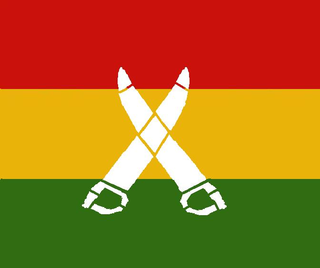
The Ghadar Movement or Ghadar Party was an early 20th century, international political movement founded by expatriate Indians to overthrow British rule in India. Many of the Ghadar Party founders and leaders, including Sohan Singh Bhakna, would go on and join the Babbar Akali Movement and would help it in logistics as a party and publishing its own newspaper in the post-World War 1 era. The early movement was created by revolutionaries who lived and worked on the West Coast of the United States and Canada, but the movement later spread to India and Indian diasporic communities around the world. The official founding has been dated to a meeting on 15 July 1913 in Astoria, Oregon, and the group would splinter into two factions the first time in 1914, with the Sikh-majority faction known as the “Azad Punjab Ghadar” and the Hindu-majority faction known as the “Hindustan Ghadar.” The Azad Punjab Ghadar Party’s headquarters and anti-colonial newspaper publications headquarters would remain in the Stockton Gurdwara located in Stockton, California, whereas the Hindustan Ghadar Party’s headquarters and Hindustan Ghadar newspaper would relocate to be based in nearby Oakland, a suburb of San Francisco, California.
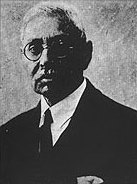
Mohamed Barakatullah Bhopali, known with his honorific as Maulana Barkatullah, was an Indian revolutionary from Bhopal. Barkatullah was born on 7 July 1854 at Itawra mohalla, Bhopal in what is today Madhya Pradesh, India. He fought from outside India, with fiery speeches and revolutionary writings in leading newspapers, for the independence of India. He did not live to see India's independence. He died in San Francisco in 1927 and was buried in Sacramento City Cemetery California. In 1988, Bhopal University was renamed Barkatullah University in his honour. He was also Prime Minister of first Provisional Government of India established in Afghanistan in 1915.
The Revolutionary movement for Indian Independence was part of the Indian independence movement comprising the actions of violent underground revolutionary factions. Groups believing in armed revolution against the ruling British fall into this category, as opposed to the generally peaceful civil disobedience movement spearheaded by Mahatma Gandhi.
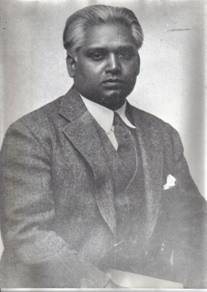
Taraknath Das was an Indian revolutionary and internationalist scholar. He was a pioneering immigrant in the west coast of North America and discussed his plans with Tolstoy, while organising the Asian Indian immigrants in favour of the Indian independence movement. He was a professor of political science at Columbia University and a visiting faculty in several other universities.

Kartar Singh Sarabha was an Indian revolutionary. He was 15-years old when he became a member of the Ghadar Party; he then became a leading luminary member and started fighting for the independence movement. He was one of the most active members of the movement. In November 1915 at Central Jail, Lahore, he was executed for his role in the movement. He was 19 years old.

Bhai Parmanand was an Indian nationalist and a prominent leader of the Ghadar Party and Hindu Mahasabha.
The Hindu–German Conspiracy(Note on the name) was a series of attempts between 1914 and 1917 by Indian nationalist groups to create a Pan-Indian rebellion against the British Empire during World War I. This rebellion was formulated between the Indian revolutionary underground and exiled or self-exiled nationalists in the United States. It also involved the Ghadar Party, and in Germany the Indian independence committee in the decade preceding the Great War. The conspiracy began at the start of the war, with extensive support from the German Foreign Office, the German consulate in San Francisco, and some support from Ottoman Turkey and the Irish republican movement. The most prominent plan attempted to foment unrest and trigger a Pan-Indian mutiny in the British Indian Army from Punjab to Singapore. It was to be executed in February 1915, and overthrow British rule in the Indian subcontinent. The February mutiny was ultimately thwarted when British intelligence infiltrated the Ghadarite movement and arrested key figures. Mutinies in smaller units and garrisons within India were also crushed.
The Ghadar Mutiny, also known as the Ghadar Conspiracy, was a plan to initiate a pan-India mutiny in the British Indian Army in February 1915 to end the British Raj in India. The plot originated at the onset of World War I, between the Ghadar Party in the United States, the Berlin Committee in Germany, the Indian revolutionary underground in British India and the German Foreign Office through the consulate in San Francisco. The incident derives its name from the North American Ghadar Party, whose members of the Punjabi community in Canada and the United States were among the most prominent participants in the plan. It was the most prominent amongst a number of plans of the much larger Hindu–German Mutiny, formulated between 1914 and 1917 to initiate a Pan-Indian rebellion against the British Raj during World War I. The mutiny was planned to start in the key state of Punjab, followed by mutinies in Bengal and rest of India. Indian units as far as Singapore were planned to participate in the rebellion. The plans were thwarted through a coordinated intelligence and police response. British intelligence infiltrated the Ghadarite movement in Canada and in India, and last-minute intelligence from a spy helped crush the planned uprising in Punjab before it started. Key figures were arrested, and mutinies in smaller units and garrisons within India were also crushed.
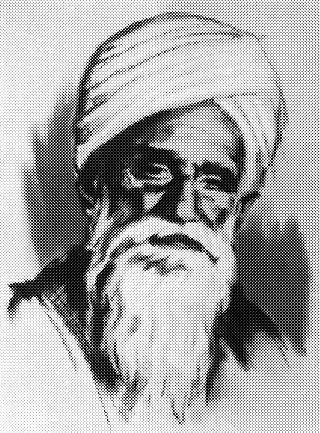
Baba Sohan Singh Bhakna was a Sikh revolutionary, the founding president of the Ghadar Party, and a leading member of the party involved in the Ghadar Conspiracy of 1915. Tried at the Lahore Conspiracy trial, Sohan Singh served sixteen years of a life sentence for his part in the conspiracy before he was released in 1930. He later worked closely with the Indian labour movement, devoting considerable time to the Kisan Sabha.

Vishnu Ganesh Pingle was an Indian revolutionary and a member of the Ghadar Party who was one of those executed in 1915 following the Lahore conspiracy trial for his role in the Ghadar conspiracy.

The Hindustan Ghadar was a weekly publication that was the party organ of the Ghadar Party. It was published under the auspices of the Yugantar Ashram in San Francisco. Its purpose was to further the militant nationalist faction of the Indian independence movement, especially amongst Indian sepoys of the British Indian Army.

Ram Chandra Bharadwaj, also known as Pandit Ram Chandra was the president of the Ghadar Party between 1914 and 1917. As a member of the Ghadar Party, Ram Chandra was also one of the founding editors of the Hindustan Ghadar and a key leader of the party in its role in the Indo-German Conspiracy. He assumed the role of the president of the party following Lala Har Dayal's departure for Switzerland in 1914 and, along with Bhagwan Singh and Maulvi Mohammed Barkatullah, was key in rallying the support of the South Asian community in the Pacific Coast in the wake of the Komagata Maru incident for the planned February mutiny. Ram Chandra was assassinated on 24 April 1918 on the last day of the Hindu–German Conspiracy Trial by Ram Singh, a fellow defendant who believed that Ram Chandra was a British agent.
Anarchism in India first emerged within the Indian independence movement, gaining particularly notoriety for its influence on Mohandas Gandhi's theory of Sarvodaya and his practice of nonviolent resistance. Anarchism was also an influence on the revolutionary movement, inspiring the works of Har Dayal, M. P. T. Acharya and Bhagat Singh, among others.

Pandit Kanshi Ram was an Indian revolutionary who, along with Har Dayal and Sohan Singh Bhakna, was one of the three key members in founding the Ghadar Party. He served as the treasurer of the party from its foundation in 1913 to 1914. In 1914, Ram returned to India as a part of the Ghadar Mutiny, which attempted to trigger mutinies in the British Indian Army during World War I. He was arrested in the aftermath of the failed February plot and later tried in the Lahore conspiracy trial. Ram was charged, along with Kartar Singh Sarabha and Vishnu Ganesh Pingle, and executed on 27 March 1915.
The first Christmas Day plot was a conspiracy made by the Indian revolutionary movement in 1909: during the year-ending holidays, the Governor of Bengal organised at his residence a ball in the presence of the Viceroy, the Commander-in-Chief and all the high-ranking officers and officials of the Capital (Calcutta). The 10th Jat Regiment was in charge of the security. Indoctrinated by Jatindranath Mukherjee, its soldiers decided to blow up the ballroom and take advantage of destroying the colonial Government. In keeping with his predecessor Otto von Klemm, a friend of Lokmanya Tilak, on 6 February 1910, M. Arsenyev, the Russian Consul-General, wrote to St Petersburg that it had been intended to "arouse in the country a general perturbation of minds and, thereby, afford the revolutionaries an opportunity to take the power in their hands." According to R. C. Majumdar, "The police had suspected nothing and it is hard to say what the outcome would have been had the soldiers not been betrayed by one of their comrades who informed the authorities about the impending coup".
The Workers and Peasants Party (WPP) (also known as the Kirti Kisan Party) was a political party in India, which worked inside the Indian National Congress in 1925–1929. It became an important front organisation for the Communist Party of India and an influential force in the Bombay labour movement. The party was able to muster some success in making alliances with other left elements inside the Congress Party, amongst them Jawaharlal Nehru. However, as the Communist International entered its 'Third Period' phase, the communists deserted the WPP project. The WPP was wound up, as its leadership was arrested by the British authorities in March 1929.
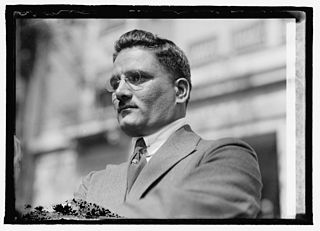
Bhai Bhagwan Singh Gyanee was an Indian Nationalist and a leading luminary of the Ghadar Party. Elected the party president in 1914, he was extensively involved in the Ghadar Conspiracy of 1915 during World War I and in the aftermath of its failure fled to Japan. He is also known for his nationalist poems that were published in the Hindustan Ghadar and later in the compilation Ghadar di Gunj. Convicted of violating U.S. neutrality laws, at the Hindu–German Conspiracy Trial, Singh was sentenced to 18 months in prison. Requests by the British government to deport him to India, where he likely would've faced execution, were rejected.

Pandurang Sadashiv Khankhoje was an Indian revolutionary, scholar, agricultural scientist and Statesman who was among the founding fathers of the Ghadar Party.
Harnam Singh Saini was a notable Indian revolutionary who participated in Ghadar Conspiracy and was hanged by British colonial government on 16 March 1917 in Lahore for instigating revolt against the empire. He was tried under third Lahore Conspiracy Case trial.

Prithvi Singh Azad (1892–1989) was an Indian independence activist, socialist revolutionary and one of the founder members of Ghadar Party. He suffered incarceration several times during the pre-independence period, including a term in the Cellular Jail. The Government of India awarded him the third highest civilian honour of the Padma Bhushan, in 1977, for his contributions to society.












